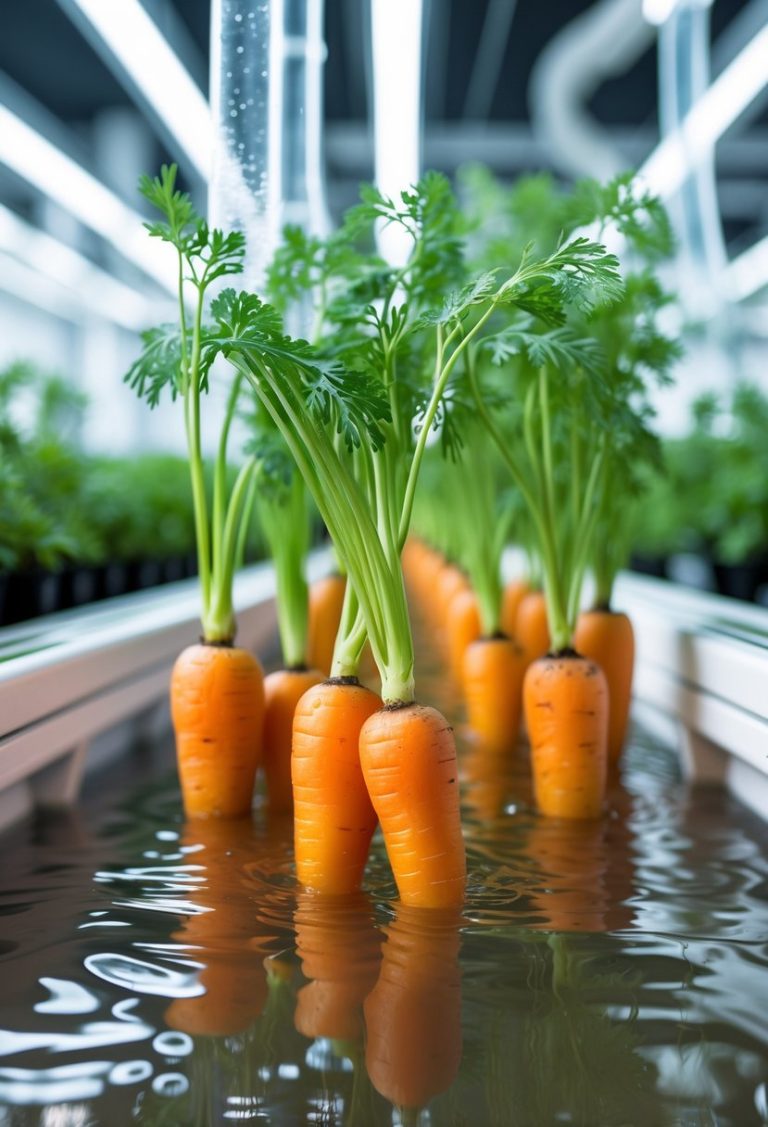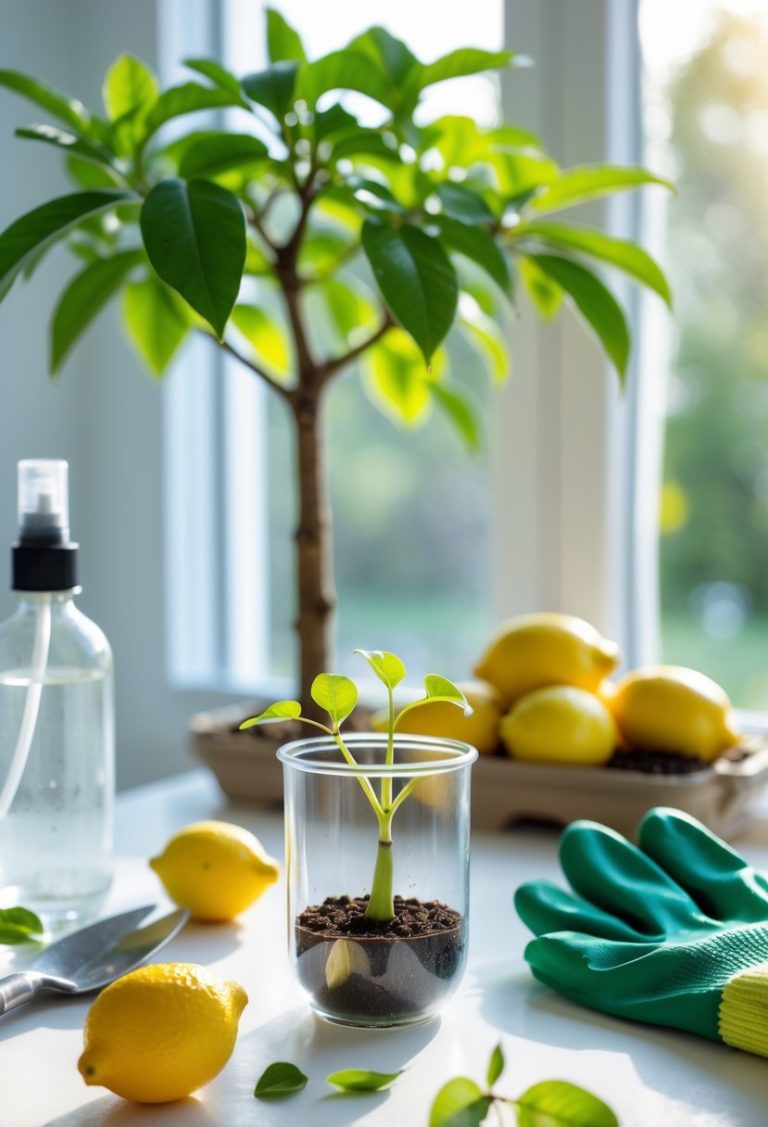11 Vegetables to Plant in August for a Thriving Late Summer Garden
Growing vegetables in August can help you extend your garden’s productivity into the cooler months. This time of year is ideal for starting certain crops that thrive as the summer heat fades. You can prepare your garden now to enjoy fresh produce well into fall.

Knowing which vegetables do well when planted in August allows you to make smart choices for your garden. These plants are suited to the changing weather and will give you a rewarding harvest in the months ahead. With the right selection, you can keep your garden productive through the end of the season.
1) Carrots

You can plant carrots in August for a solid fall harvest. They need deep, loose soil so their roots can grow straight and strong. Choose a sunny spot with well-drained soil to help them develop properly.
Carrots grow best in cool weather, so starting them in August gives them enough time to mature before frost. Keep the soil evenly moist during germination to avoid stunted root growth.
Some carrot varieties are better for late planting. Look for ones known for sweetness and shorter growing times. Planting every two to three weeks can extend your harvest and keep fresh carrots coming.
Carrots take around 65 to 75 days to be ready. Be patient and give them steady care. They are a great choice if you want fresh vegetables as the weather cools down.
2) Beets
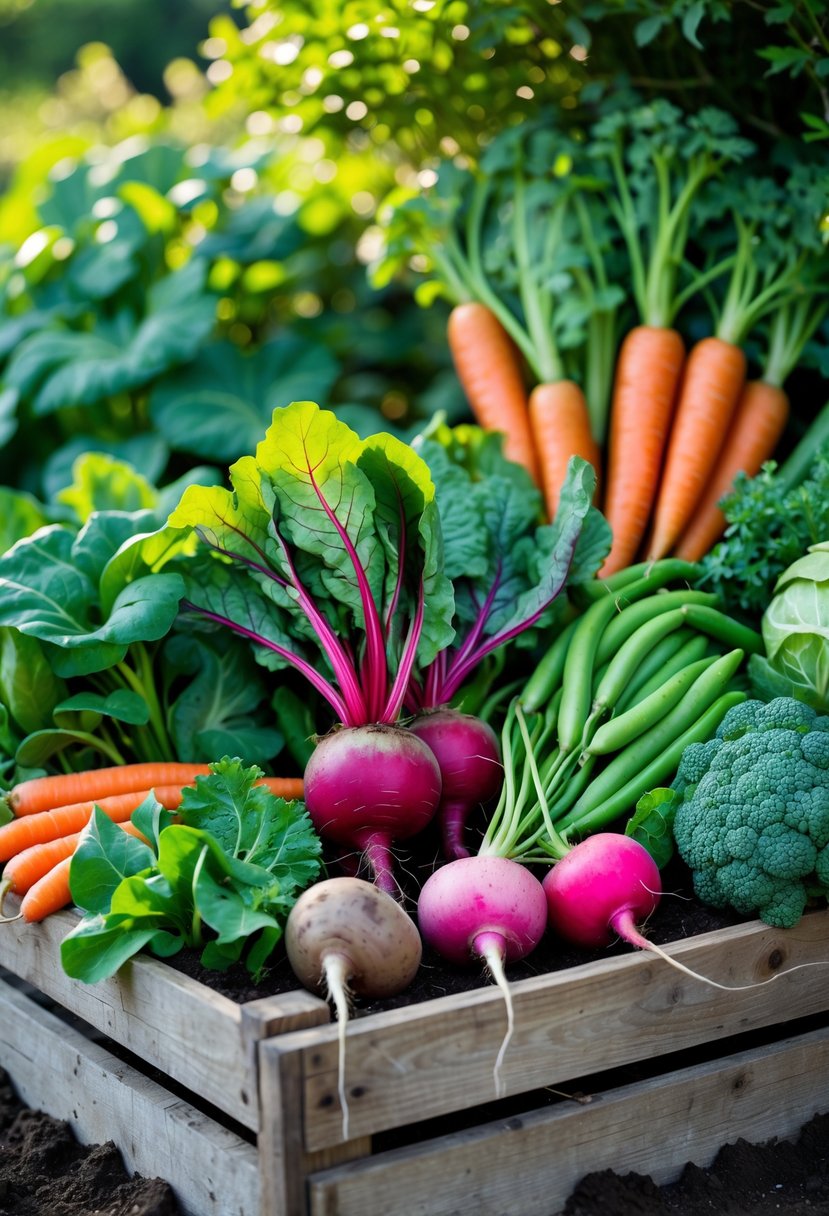
Beets are a great vegetable to plant in August. They grow well in cooler weather, making them a good choice for a fall harvest. You can sow beet seeds directly in your garden soil.
Make sure the soil is loose and well-drained. Beets prefer full sun but can tolerate some shade. Water them regularly to keep the soil moist, especially while seeds are germinating.
Beets grow best when soil temperatures are between 50 and 75°F. You should see sprouts in about one to two weeks. Thin seedlings to give each plant room to grow strong roots.
You can harvest baby beets in as little as 30 days, or wait longer for mature roots. Both the roots and beet greens are edible and nutritious. Planting beets in August gives you fresh vegetables before the first frost.
3) Kale

Kale is a good vegetable to plant in August because it grows well in cooler weather. It takes about 2 to 3 months to mature, so you can expect fresh leaves by early fall or even later in the season.
You should plant kale seeds about 1/4 to 1/2 inch deep. Space them 12 to 18 inches apart to give each plant enough room to grow. Use well-draining, loamy soil and water regularly, especially during dry periods.
Kale is hardy and can survive light frost. In fact, frost often makes the leaves taste sweeter. If you live in a warmer area, plant kale in a spot with some shade to protect it from heat.
After about 25 days, you can start cutting the outer leaves for harvest. The plant will continue to grow new leaves, giving you multiple harvests from one plant. This makes kale a practical choice for extending your garden’s productivity.
4) Turnips

Turnips are a fast-growing root vegetable that you can plant in August for a fall harvest. You can harvest baby turnips in about 30 days and full-size turnips in around 50 to 60 days. This makes them a good choice if you want quick results before frost.
You get two crops from turnips: the edible roots and tender greens. Both are useful for cooking and add variety to your garden. Turnip greens are similar to mustard greens and can be harvested multiple times until hard frost.
Plant turnips in well-drained soil with consistent moisture. They thrive in cooler weather, so late summer is a great time to sow the seeds. Choose fast-growing types like ‘Hakurei’ for sweeter, mild roots that you can eat raw or cooked.
Turnips do not require much care once planted. Make sure they get enough water and space to grow, and thin seedlings if needed. You can easily fit turnips in a small garden or raised bed.
5) Radishes

Radishes are one of the fastest vegetables you can plant in August. They grow quickly and can be ready to harvest in about 3 to 4 weeks. This makes them a great choice if you want a quick crop.
You should plant radish seeds about half an inch deep and space them 1 to 2 inches apart. They do best in sunny spots with well-drained soil. Water your radishes regularly, aiming for about one inch of water each week.
Radishes prefer cooler weather, so late August is a good time to plant them. They can handle light frost but will not do well in very hot or dry conditions. Planting radishes can also help prepare the soil for slower-growing crops by loosening it as their roots grow.
You can plant radishes several times during the late summer for multiple harvests. They also work well when planted alongside carrots because radishes grow faster and can be harvested before the carrots need space.
6) Scallions

Scallions are a great vegetable to plant in August. They grow quickly and do well in cooler weather, making them ideal for a fall harvest.
You can start scallions by planting seeds or small sets. Make sure to give them plenty of water and full sun.
Plant scallions in loose, well-drained soil. Keep the spacing about 1 inch apart to allow them room to grow.
They don’t need a lot of space, so you can grow them in small garden beds or containers.
Scallions are ready to harvest in about 50 to 60 days. You can pull them when the stalks reach the size you want.
They add flavor to many dishes and are easy to store if you keep them in the fridge. Planting scallions in August helps you enjoy fresh greens into the fall.
7) Bok Choy
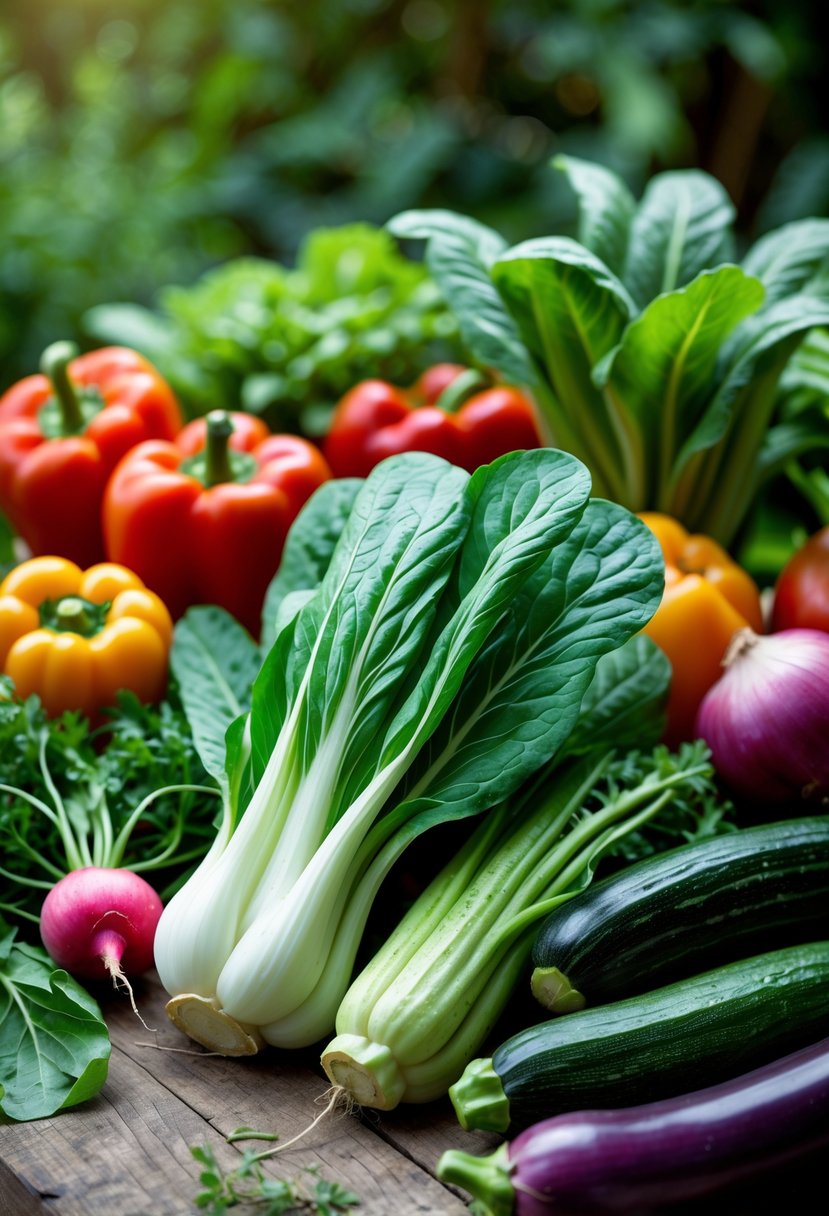
You can plant bok choy in August for a fall harvest. It grows fast and prefers cooler weather, making it a good choice when temperatures start to drop.
Bok choy does well in part sun. If your garden gets strong sunlight in August, giving it some shade can help prevent it from bolting too quickly.
This vegetable is versatile in the kitchen. You can eat it raw in salads or cook it in stir-fries and side dishes. Both young and mature leaves are edible.
To get the best results, choose varieties suited for cooler seasons, like Joi Choi or Shanghai Green. Keep the soil moist and watch for quick growth.
If bok choy flowers, those are edible too. They have a mild, tasty flavor similar to other leafy greens. Plant now to enjoy fresh bok choy through the fall.
8) Mizuna

Mizuna is a leafy green that grows well when planted in August. It prefers cooler weather, making it a great choice for a fall garden. You can expect it to do well even if temperatures start to drop.
This vegetable has a mild peppery taste that adds flavor to salads. You can mix it with other greens to create a fresh, tasty dish.
Mizuna grows quickly and is easy to care for. Sow seeds directly in the soil or start them in small pots. Thin seedlings to give each plant enough space to grow.
It handles light frost, so you can keep harvesting it later in the season. Red varieties are popular not only for their taste but also for their bright color that adds interest to your garden.
Plant mizuna in loose, well-drained soil with consistent moisture. This will help your plants stay healthy and produce more leaves.
9) Spinach

You can plant spinach in August for a fresh fall harvest. Spinach grows well in cooler weather, making late summer a good time to start it. The soil is still warm enough to help seeds germinate quickly.
Spinach seedlings will grow fast as temperatures begin to cool down. You will want to plant the seeds in a spot that gets partial to full sun. Keep the soil moist to help young plants establish.
By planting spinach in August, you can harvest tender leaves in a few weeks. Spinach is great for salads, cooking, or smoothies. It also provides important nutrients like iron and vitamins.
If you live in a colder area, consider planting a quick-maturing spinach variety. This will help you get a good crop before frost arrives. You can also plant a second round later in the fall for continued harvest.
Spinach is a reliable and easy crop to grow in late summer. With some care, your garden will supply fresh, healthy spinach well into fall.
10) Lettuce

Lettuce is a great vegetable to plant in August. It grows well in cooler weather and matures quickly, usually in about 30 days. This makes it a good choice for a fall harvest.
You can plant different types, like romaine, butterhead, or iceberg. These varieties handle cooler temperatures and shorter days better than summer heat.
Lettuce prefers well-drained soil and consistent moisture. Make sure to keep the soil damp but not waterlogged. This helps prevent the leaves from becoming bitter.
If you want a steady supply, plant seeds every two weeks. This way, you will have fresh lettuce over a longer period. Also, try to plant in a spot with some afternoon shade as temperatures start to drop.
Harvest leaves when they are young and tender for the best taste. You can pick outer leaves regularly to allow new ones to grow.
11) Kohlrabi
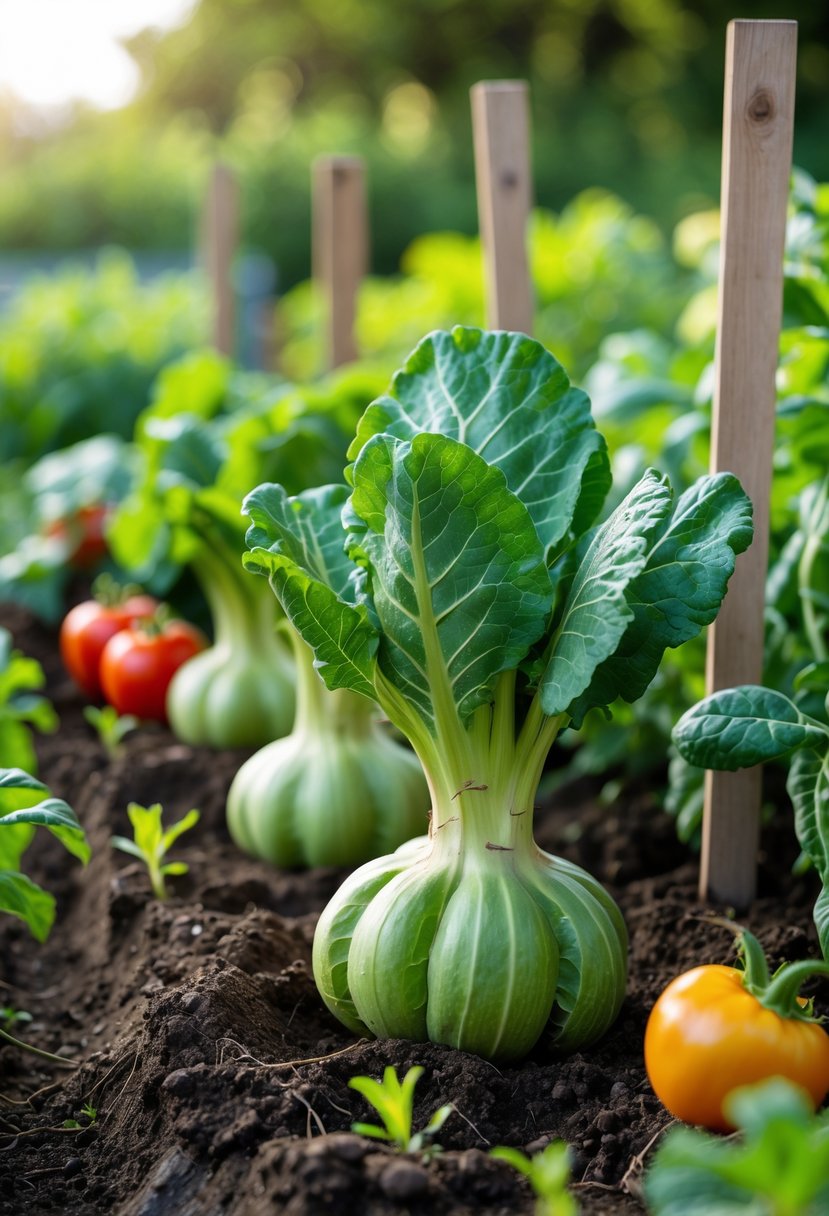
You can plant kohlrabi in August for a fall harvest. It grows well in cooler temperatures that come after summer. The soil should be warm when you sow the seeds to help them sprout faster.
Kohlrabi needs regular watering and good care. You can start it indoors in containers or plant it directly in the ground or raised beds. It grows best in soil that holds moisture but drains well.
This vegetable usually takes 45 to 60 days to mature. Young kohlrabi are tender and taste sweet. Older kohlrabi can become tough and woody, so it’s best to harvest them early.
Plant your seeds about half an inch deep. Thin the seedlings so they have space to grow, about 6 to 8 inches apart. With steady attention, you can enjoy this unusual but tasty vegetable in your fall garden.
Essential Growing Tips for August Vegetables

To grow vegetables well in August, focus on improving your soil and managing water effectively. Good soil gives plants the nutrients they need, while proper watering and mulching keep roots healthy and help your garden thrive despite warm weather.
Soil Preparation Strategies
Start by loosening your garden soil to improve air and water flow. Mix in organic matter like compost to add nutrients and improve soil texture. Adding perlite or cocopeat can help the soil hold moisture without becoming soggy.
Check soil pH to ensure it suits the vegetables you want to grow. Most veggies prefer a pH between 6.0 and 7.0. If needed, add lime to raise pH or sulfur to lower it.
Remove old plant debris to reduce pests and diseases. Prepare beds by raking the soil smooth and planting seeds or seedlings at the right depth and spacing. This helps roots grow strong and prevents overcrowding.
Watering and Mulching Best Practices
Water your plants deeply but less often to encourage strong root systems. Early morning watering reduces evaporation and helps prevent fungal diseases.
Apply mulch around your plants to keep soil moist and cool. Mulch also reduces weeds that compete for water and nutrients. Organic mulches like straw or shredded leaves work best.
Watch your soil moisture regularly. Adjust watering during hot spells or rain. Avoid watering leaves to reduce disease risk. Instead, aim for the soil at the plant base.
Maximizing Your Late-Summer Harvest

To get the most from your late-summer garden, focus on protecting your plants and encouraging healthy growth. Keeping pests and diseases under control is essential. Also, using planting techniques that support different vegetables can improve your yield.
Pest and Disease Management
Watch your plants closely for signs of pests like aphids, caterpillars, and beetles. These insects can quickly damage young vegetables. Use natural remedies like neem oil or insecticidal soap to control them without harming beneficial insects.
Keep your garden clean by removing dead leaves and weeds. This reduces hiding places for pests and lowers disease risks. Water your plants at the base, not from above, to avoid fungal infections.
Rotate crops to prevent soil-borne diseases from building up. Avoid planting the same types of vegetables in the same spot each year. This helps break the cycle of pests and diseases.
Companion Planting Benefits
Certain plants grow better when planted near others. Companion planting can improve flavor, reduce pests, and boost growth. For example, planting basil near tomatoes can help repel flies and improve tomato taste.
Some combinations protect plants from weeds by shading the soil. Corn, beans, and squash are a classic trio that support each other’s growth. Beans fix nitrogen in the soil, feeding corn and squash.
Use companion planting to manage space and resources efficiently. This method helps your garden stay healthy and productive through August and into the fall.




